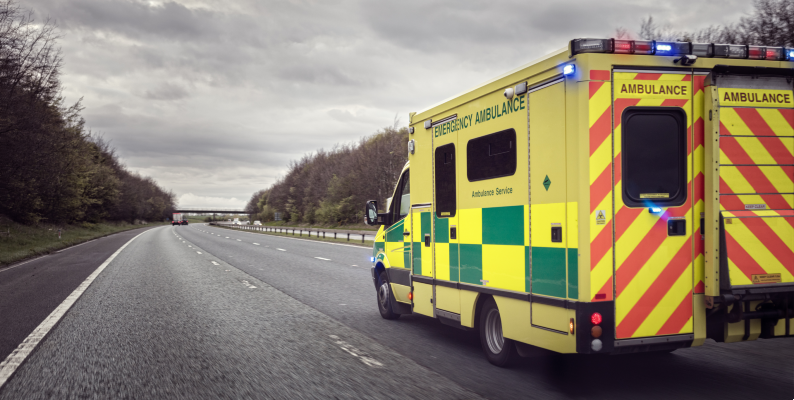HOW TO DEAL WITH EMERGENCY VEHICLES

As a motorist, its only a matter of time before we hear those sirens or see bright flashing blue lights speeding up behind us and to be honest, it can certainly become a moment of panic, especially for the less experienced drivers among us.
To make matters worse, by simply moving out of their way, you could end up with a fine of up to £1,000 just for trying to do the right thing.
So what are the rules regarding emergency vehicles?
Although emergency vehicles have a priority on the road when displaying their flashing lights and with sirens blaring, you need to make sure you allow them to pass you as quickly and safely as possible. If you fail to do so, then you could end up on the wrong side of the law and land yourself with a heavy fine.
Doing the following to let an emergency vehicle pass you could land you in trouble:
- Moving past the solid white line when waiting at the red traffic light could land you with a fine and three penalty points on your licence.
- Moving into a bus lane to let the vehicle pass is also not a good idea. Many bus lanes are now monitored by CCTV, and they don’t care if it was to let an emergency vehicle pass; the local authority will still fine you for doing so.
- Entering a Yellow Box Junction when your exit is blocked can also lead to a fine.
So what does the Highway Code say you should do when dealing with an emergency vehicle?
The highway code says you should look and listen for emergency vehicles. The usual ambulances, fire engines, police, or other emergency vehicles such as doctors, coastguards, bomb disposal, mountain rescue, and blood transfusion services may also be using blue, red, or green lights and sirens, or flashing headlights, or traffic officers or support vehicles using flashing amber lights.
You should try to keep out of the way of an emergency vehicle, check where they are coming from using your mirrors and looking well ahead or at side streets, etc.
Try not to panic, watch for the path of the emergency vehicle, and take any reasonable and legal action necessary to allow them to pass.
Try to avoid stopping before the brow of a hill or on a narrow section of road where the emergency vehicle will struggle to pass. Under no circumstances, mount the kurb, don’t put anyone else in danger; and don’t brake harshly.
Emergency vehicles and their drivers know what the rules are for motorists, and they won’t expect you to break the law, only to make a reasonable and safe attempt to help clear the way for them.
Look for a sensible place to pull over when you can do so safely and legally.
The emergency vehicle driver will turn off their siren if you cannot move, such as when sitting at a red traffic light. They will wait patiently behind you until you can move forward, and then they will reengage the siren.
Watch the Blue Light Aware video to find out more about how to help emergency vehicles get through traffic.
If you are a full licence holder but lack confidence around emergency vehicles or worry about what you should do, then our team of local driving instructors would be more than happy to help you, be it simple advice or maybe an in-car refresher lesson. We are here to help.
Please contact us through our website, https://www.2nd2nonedrivingschool.co.uk/

Comments